Branding: Coordinating My Wardrobe to the HARP Colour Palette
Posted by Dorothy Lander: dorothy@tryhealingarts.ca The talented team at This is Marketing (https://www.thisismarketing.ca/) chose a unique colour palette to illuminate
HARP The People’s Press is committed to the accessible publishing revolution and we are keenly aware that the upturn in our overall reading and especially therapeutic reading online in a COVID world of self-isolation and quarantine, has sharpened the focus on accessibility for the visually impaired and the print disabled. Accessibility for the homeless and other marginalized groups, which often took the form of seeking refuge in public libraries, and now has been curtailed, also has our attention. Social media such as Facebook, Twitter, and Instagram have taken on a life of their own to meet the accessibility challenge and also as a force for healing in their own right.
Accessible Publishing (NNELS/APMA): As partners with the National Network for Equitable Library Service (NNELS), HARP seeks to make all e-publications accessible to those with temporary or permanent visual, reading, or mobility disabilities. EPUB is the favoured publishing platform that allows users to adjust the font and the brightness/contrast.
We do not often hear if and how HARP publications have reached people, especially from those who are most in need of the healing arts. So it is worthy of mentioning a striking example of how the HARP Facebook page can reach across the mists of time to create a therapeutic moment of connection through reading. A 56-year-old woman whom John Graham-Pole treated for cancer in Glasgow, Scotland, when she was eight, spotted his medical memoir, Journeys with 1000 Heroes, on Facebook, when she was seeking more information on her treatment and circumstances as a pediatric patient. She spotted the HARP FB posting about pediatric education in an article by Canon Broar in Hektoen International: Journal of Medical Humanities ( https://hekint.org/2020/08/12/learning-about-children/) and her mum remembered that Dr. Graham-Pole had cared for her. From there she found her way to the HARP website and purchased John’s medical memoir via PayPal. John and his long-ago patient are now renewing their connection and sharing memories on email.
When we actually did a tally of the social media platforms and online applications at every stage in the publishing trajectory, we were astounded ourselves. We present an incomplete list here.
Dorothy Lander used Blurb book publishing software (blurb.com) to create The Peoples Photo Album: A Pictorial Genealogy of the Antigonish Movement, and Flipbuilder software (www.flipbuilder.com) to create the Flipbook version of Hmmm – M the Humdinger.
Four business students with a major in marketing at St. Francis Xavier University took on HARP for their Service Learning placement and our challenge to find printing and distribution alternatives to the Amazon grip on e-books, which so disadvantages independent publishing houses. The students introduced us to Word-2-Kindle. com and we used their software to create the e-book version of Blood Work, a novel for young adults by John Graham-Pole.
Dorothy Lander and digital artist Cathy Lin use Adobe Creative Cloud (www.creativecloud.com) to produce online and print books; apps include Photoshop, InDesign, Illustrator, Acrobat DC, Audition, and Premiere Rush.
Pre-publication copies to arts-health practitioners and scholars providing testimonials used Google Drive, wetransfer (www.wetransfer.com), and Dropbox (www.dropbox.com).
We sought testimonials for the musical botanical Flipbook Hmmm – M the Humdinger from intergenerational readers – teachers, parents and grandparents reading with and to children – but often the COVID lockdown prevented this happening in person. 4-year old Jupiter “performed” her testimonial at a distance, leading off with “Grandma, I did like the book.” The video was captured on her mother’s mobile phone, shared with Grandma, and then uploaded to YouTube.
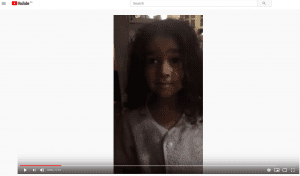
The testimonial reads as follows:
This delightful book is fun for all ages – my 4- year-old granddaughter watched and listened all the way through and then went dancing and humming around the house.
“Grandma, I did like the book” https://youtu.be/bwjYJHsWluk
As this book is being published, we are in tough times. This little story reminds us that we are all special and inspires us with both the beauty of nature in the artwork and the beauty of the human voice. As we preserve art, music, and especially beauty, humans will become a less destructive species.
– Marilyn Manzer, music educator, Wolfville, Nova Scotia
Sound engineers Richard Perry in Nova Scotia and Rob Rothchild in Florida transferred large audio MPEG files using Groove Music app to achieve cross-border coordination of the humming soundtrack by University of Florida Shands musician-in-residence Cathy Dewitt and narration by John Graham-Pole for the online Flipbook version of Hmmm M the Humdinger and to remaster and update the piano and poetry CD (1999) Where Do All the Young Ones Go To? on the HARP label featuring John Graham-Pole reading his poetry and Shands musician-in-residence at the piano.
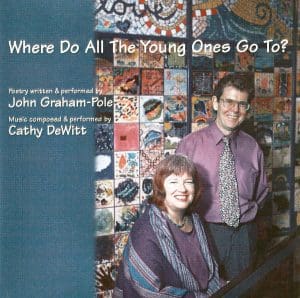

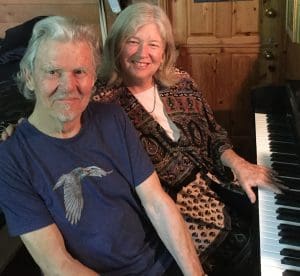

We use WordPress software to create the HARP website, which comes with a menu that links to different pages and postings, with a provision for an archive.
We use SoundCloud (www.soundcloud.com) to create promotional “trailers,” e.g. the first 45 seconds of the audio of Hmmm M the Humdinger, with narration by John Graham-Pole and humming by Cathy DeWitt.
We use Constant Contact (www.constantcontact.com) to accommodate mass email postings to announce releases, invitations to events such as book launches, notices of media events, allowing selective distribution by category. For example, “Indigenous Arts and Advocacy” contacts received invitations to join the Virtual Book Launch of Singing to the Darkness by Patricia Vickers and subsequently the links to the Zoom recordings of the four sessions. Dorothy created a category she calls “Botany Creatives” as a selective contact list for announcements about the hardcover and Flipbook Hmmm – M the Humdinger, which features collages of pressed and dried botanicals.
HARP initiated virtual book signing to accompany the virtual book launch of Singing to the Darkness: all attendees at the book launch who purchased the book through PayPal on the HARP website received an email from Patricia Vickers with her digital signature and a greeting.
HARP posts regularly on dedicated Facebook pages: the main HARP FB page to amplify HARP publications and share art-for-health news; Imagine Antigonish heritage photos for community health; and the Truth and Reconciliation DVD of 1784: (Un)Settling Antigonish created by filmmaker Denise Davies for the HARP label.
HARP has an active Twitter account @harppublishing, which is growing as Dorothy Lander shares HARP news and media events as well as general news in the arts-for-health field.
Virtual launches via Zoom have been spread over several weekly sessions, and have seen attendance grow each week through publicity and outreach. The attendance at a 4-day workshop, which was rescheduled from live to virtual after COVID, soared from 100 pre-registrants to 1000 when it went virtual. “Celebrity” arts-health practitioners and scholars participated in launch of Singing to the Darkness responding through their unique lens: book designer and editor Leslie Eliel spoke to the choice of Patricia Vickers’ artwork vis a vis her story; Gabor Matḗ spoke about the book’s contribution to healing from trauma through compassionate inquiry, Martin Brokenleg spoke of the book’s inspiration for youth resilience.
This screenshot of the gallery view of Patricia Vickers in conversation with Dr. Martin Brokenleg. Indigenous and settler attendees from coast to coast to coast in North America are represented in this view. We made recordings of these events available on the HARP website and circulated notice via Constant Contact; the link to the recordings could be shared on Facebook, Twitter, LinkedIn and email.
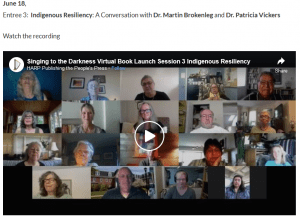

Posted by Dorothy Lander: dorothy@tryhealingarts.ca The talented team at This is Marketing (https://www.thisismarketing.ca/) chose a unique colour palette to illuminate


L to R Clockwise: John Graham-Pole aged 2 on Mummy’s knee with sisters Elizabeth, Mary, and Jane, High Bickington, Devon,
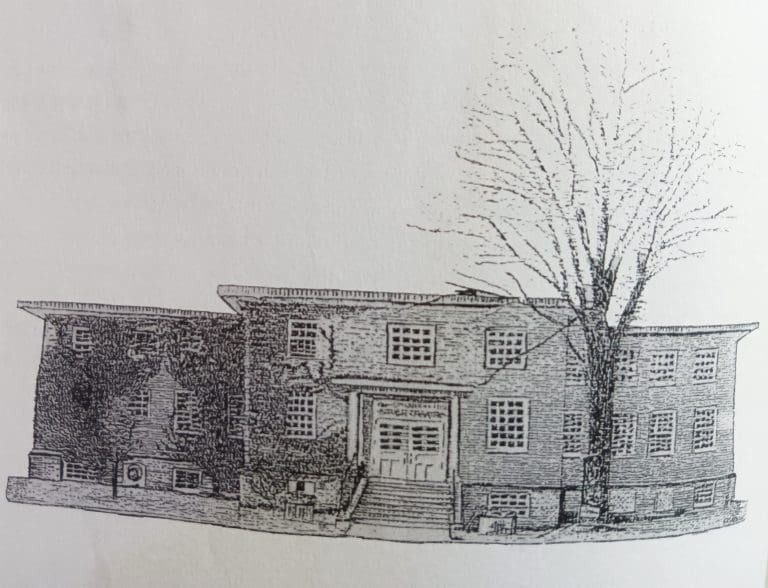

Posted by Dorothy Lander Once a month, John Graham-Pole and I showcase the publications of HARP The People’s Press at
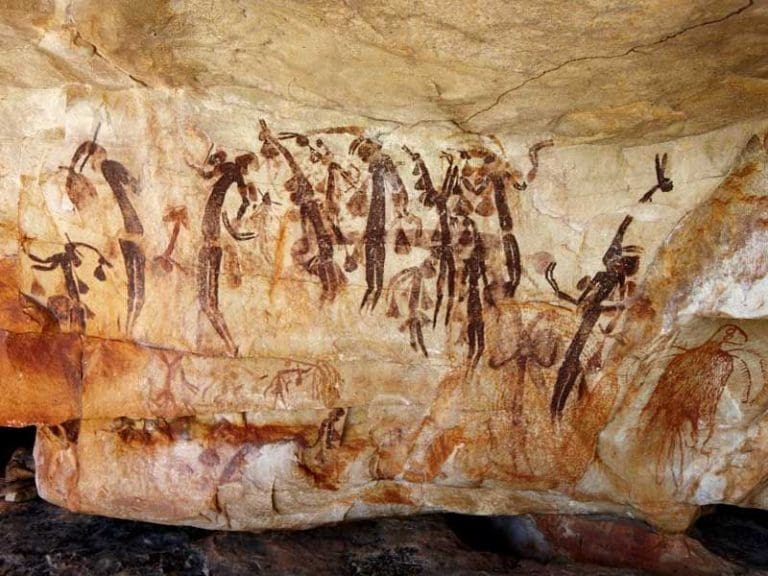

Aboriginal Rock Mural Kimberley Region, Western Australia Posted by John Graham-Pole I don’t have answers to any of these questions,
| Cookie | Duration | Description |
|---|---|---|
| cookielawinfo-checkbox-analytics | 11 months | This cookie is set by GDPR Cookie Consent plugin. The cookie is used to store the user consent for the cookies in the category "Analytics". |
| cookielawinfo-checkbox-functional | 11 months | The cookie is set by GDPR cookie consent to record the user consent for the cookies in the category "Functional". |
| cookielawinfo-checkbox-necessary | 11 months | This cookie is set by GDPR Cookie Consent plugin. The cookies is used to store the user consent for the cookies in the category "Necessary". |
| cookielawinfo-checkbox-others | 11 months | This cookie is set by GDPR Cookie Consent plugin. The cookie is used to store the user consent for the cookies in the category "Other. |
| cookielawinfo-checkbox-performance | 11 months | This cookie is set by GDPR Cookie Consent plugin. The cookie is used to store the user consent for the cookies in the category "Performance". |
| viewed_cookie_policy | 11 months | The cookie is set by the GDPR Cookie Consent plugin and is used to store whether or not user has consented to the use of cookies. It does not store any personal data. |